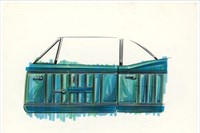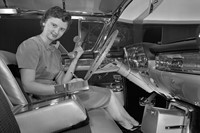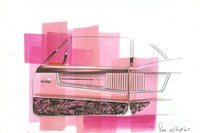Is a car sexist or feminist? Like most objects designed by men in history, its creation never really had women in mind, but would eventually – even accidentally – be adopted as a tool for female freedom. The image of women behind the wheel is one of 20th-century pop culture’s most powerfully symbolic: Thelma and Louise driving headfirst into the Grand Canyon to escape the law; Devon Aoki resplendent in pink leather chaps in street-racing chronicle 2 Fast 2 Furious; Saudi women drifting and skidding in M.I.A.’s video for Bad Girls, a comment on the ban on female drivers in the country at that time. What those images have in common is the association of driving with freedom, and escape: something they’ve always offered for men, too, but arguably more powerfully for women.
As the V&A’s new exhibition, Cars: Accelerating the Modern World, hopes to prove, uncovering the history of car design isn’t an exercise limited to petrolheads: having shaped, and been shaped by, popular culture so profoundly, the car is essential to how we see ourselves. For something so everyday, the car occupies a weird, contested place in culture, especially in 2019. A car has always been as much about ideas of subculture (from 1950s hotrodders, to contemporary lowriders) as it has been about ideas of conformity (they are synonymous too with the daily commute). It has always offered freedom (speed, the open road) while having to subscribe to a necessary narrative of safety (road accidents and car-related deaths). Depending on the audience, it has been an object of sexual adventure, and of the model family. The V&A’s wide-reaching exhibition covers all of this ground, with women emerging as the subject around whom many of these tensions have collected – and accelerated change.
You can’t consider what the car is without considering its marketing: the car is always necessarily tied up with the idea by which it is sold. Henry Ford’s Model T – created in 1908 and in continual production until 1927 – practically created consumer culture, bringing car ownership, and a new ideology of consumption, to the masses. The simple design and introduction of a moving assembly line was world-changing: as more and more companies raced to match Ford in price and production, half of American households owned a car by 1930. This Fordist ideology came with a “wage/gender bargain”, requiring that men worked full-time for a “family wage”, while women worked at home for no pay. But ironically, for an economic ideology that limited women so much, the mass production of cars coincided with bringing women out of the home and behind the wheel.
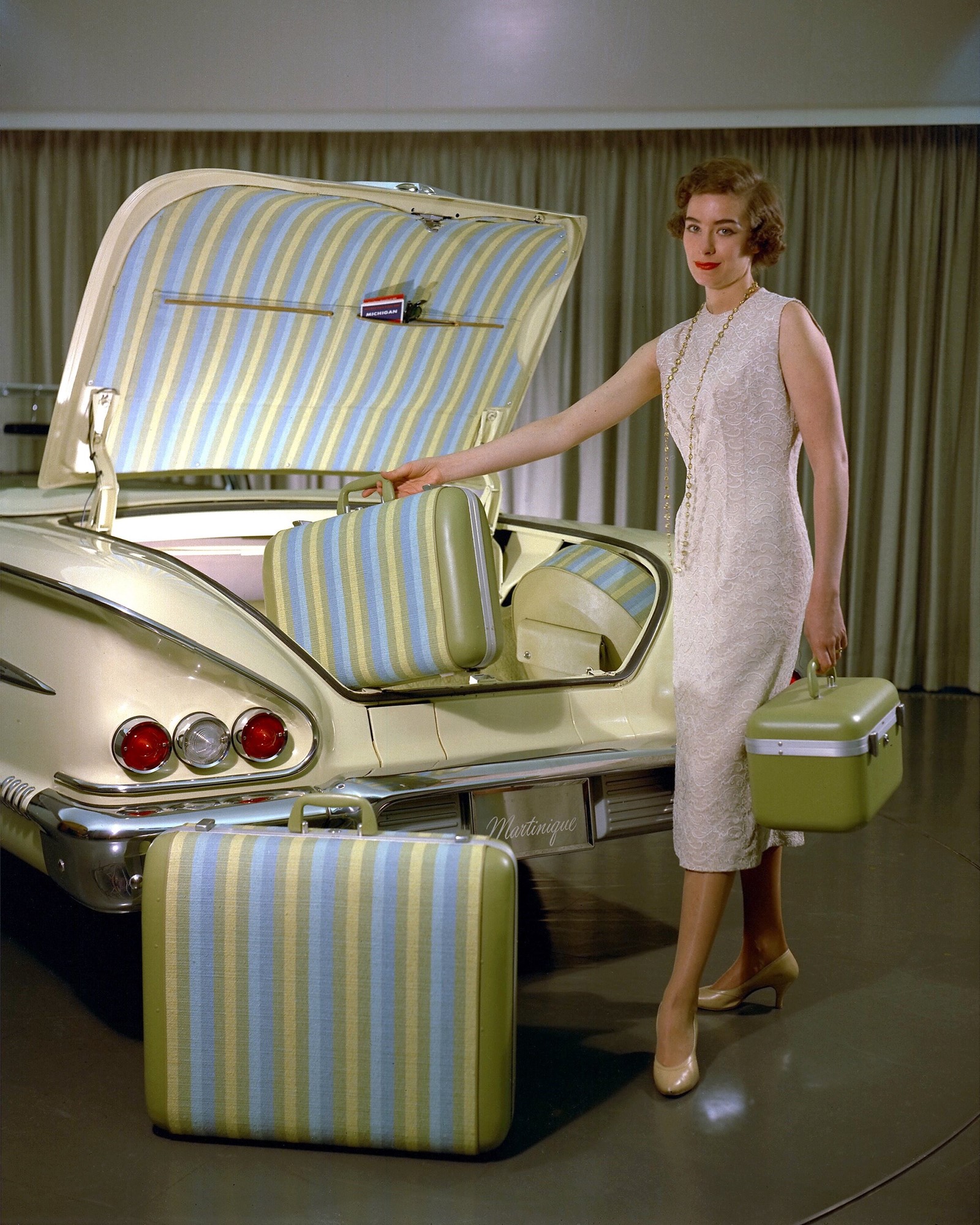
Ever since the turn of the century, women were drawn to driving cars as an act of empowerment. At Brooklands in the UK, the world’s first purpose-built racetrack, female racers were banned as early as 1907 – but this didn’t stop women like Dorothy Levitt, Kay Petre and Jill Scott-Thomas from racing outside of official spaces, anyway. By the 1950s, figures like Alfred Sloan at General Motors knew the power of the female driver: a statistic of the time suggested that it was women “who cast the final vote” in the purchase of three out of four automobiles. So, why wouldn’t Detroit’s major car producers do more to try and speak to them?
It’s out of this desire to appeal to women drivers that the first group of female car designers was formed. Named the ‘Damsels of Design’, the group of ten women were completely unprecedented: the first to be appointed to General Motors’ design team, and, in fact, any car design team in Detroit. The brainchild of the company’s then vice president of design, Harley Earl, all the women were recent graduates of either New York’s Pratt Institute or the beautiful Cranbrook Academy, a stone’s throw away from GM’s headquarters in Detroit. Six of the women worked on cars, designing for Buick, Cadillac, Chevrolet, Oldsmobile and Pontiac, while the other four worked on household appliances (including the kitschy ‘Kitchen of Tomorrow’). Arriving amid a flurry of press, the materials around the Damsels of the time are revealing of the public narrative the company wanted to set about the hires: you don’t need to inspect the materials that closely to see how the women’s role was inevitably circumscribed by the gender politics of their day.
Beginning with the Damsels in the mid-1950s and continuing for some decades, female ‘car stylists’ were strictly limited to working on interiors of the car, and banned from exterior design departments. These might include anything from the seats, steering wheels, glove compartments, doors, dashboard design and, of course, the colour and materials of the choice of fabric (especially, as the male narrator quips in a promotional video from the time, “upholstery that won’t snag their nylons!”). The idea stemmed from the thought that if GM’s car brands could make women comfortable as passengers – and drivers – of cars, then they would hold the key to the buying power of the American family, surpassing even Ford.
But through the Damsels’ intimacy with the user experience, the group actually created innovations in car design that would easily outlive those of their male peers. In 1958, when Harley Earl tasked them with putting together a “Feminine Auto Show” to highlight their design work, he stated how they had “really won their spurs with this… collection”, proving “that women have established a real toe-hold in automotive designing and that they have a limitless future”. But beneath the sexist pomp of it all, they showcased innovations that would become standard: these included the first-ever retractable seatbelts, storage consoles, child-proof door locks, and the classic lighted make-up mirror – all features that remain to this day. (The exterior features designed by their male peers, such as extreme tail fins, wouldn’t last the course.)
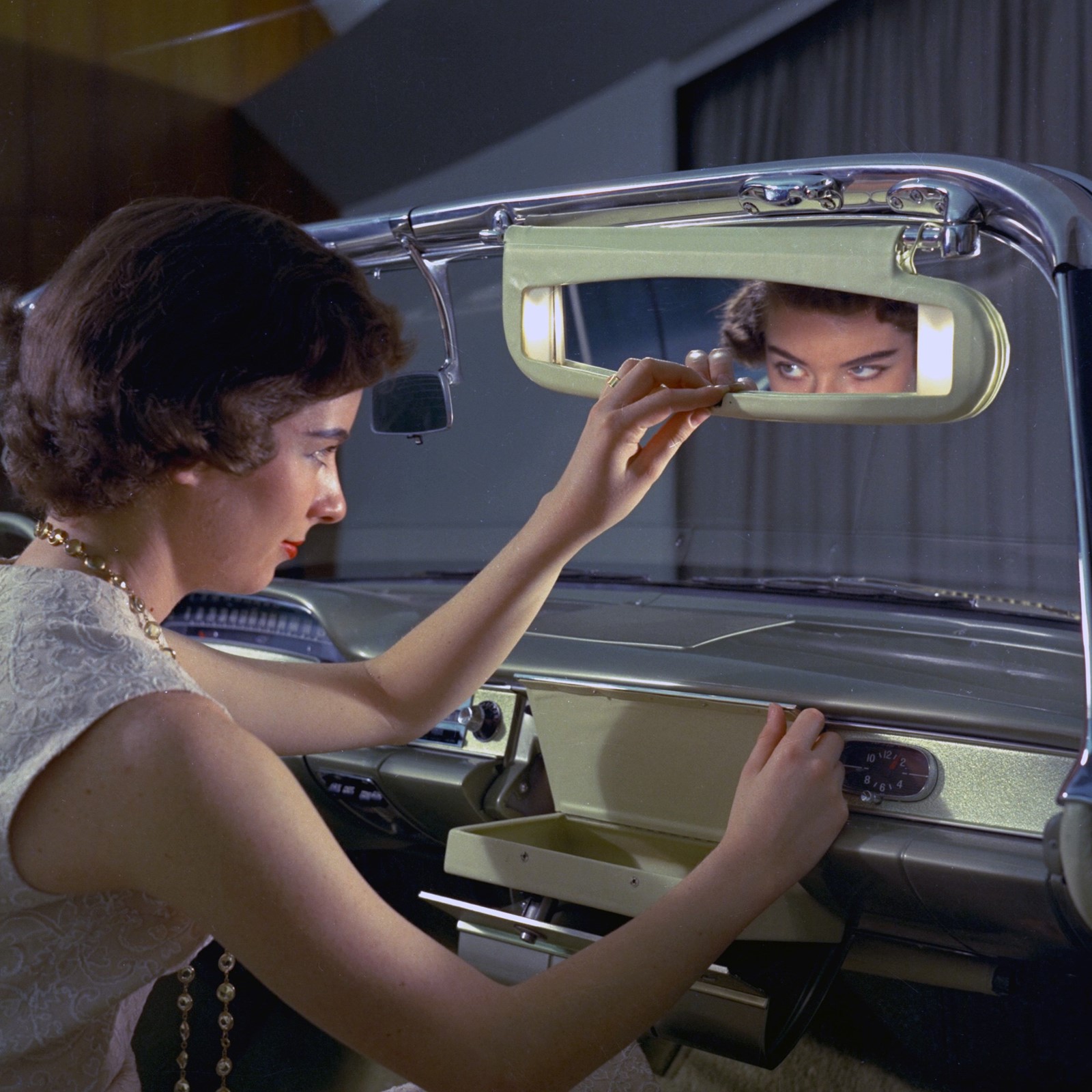
While many of the Damsels moved on in the subsequent years, realising they had been merely part of a PR stunt, one designer stuck it out: Suzanne Vanderbilt, who GM has recently reappraised and brought back into the spotlight as one of their most pioneering designers. She was the only Damsel who stayed on at GM through the 1960s and 70s, working her way up the ranks despite the numbers of female designers staying as low as they ever were throughout those decades. (Some of her personal 1960s innovations included inventing an inflatable seatback for better back support, but GM didn’t put it into production for decades.) At Cranbrook’s archive, you can see some of Suzanne’s original sketches: like a particularly futuristic steering wheel, or a door frame for a “Pink Panther” car. Their idiosyncratic flair makes you wonder what Vanderbilt might have designed if she’d been properly handed the wheel.
“We were always the ‘la femmes’ or we were the female designers,” Vanderbilt later said in an interview, once she was retired. “What distressed most of us was that we could never be identified as just designers.” This is the decade of Penelope Pitstop, after all, who was reportedly drawn up, along with her pink car, in about two hours after Joseph Barbera realised there should probably be at least one woman among the Wacky Racers. But even all these years later, gender parity in the industry has a long way to go: women are still underrepresented in the auto world, holding only a quarter of manufacturing jobs in the United States last year according to one Deloitte report.
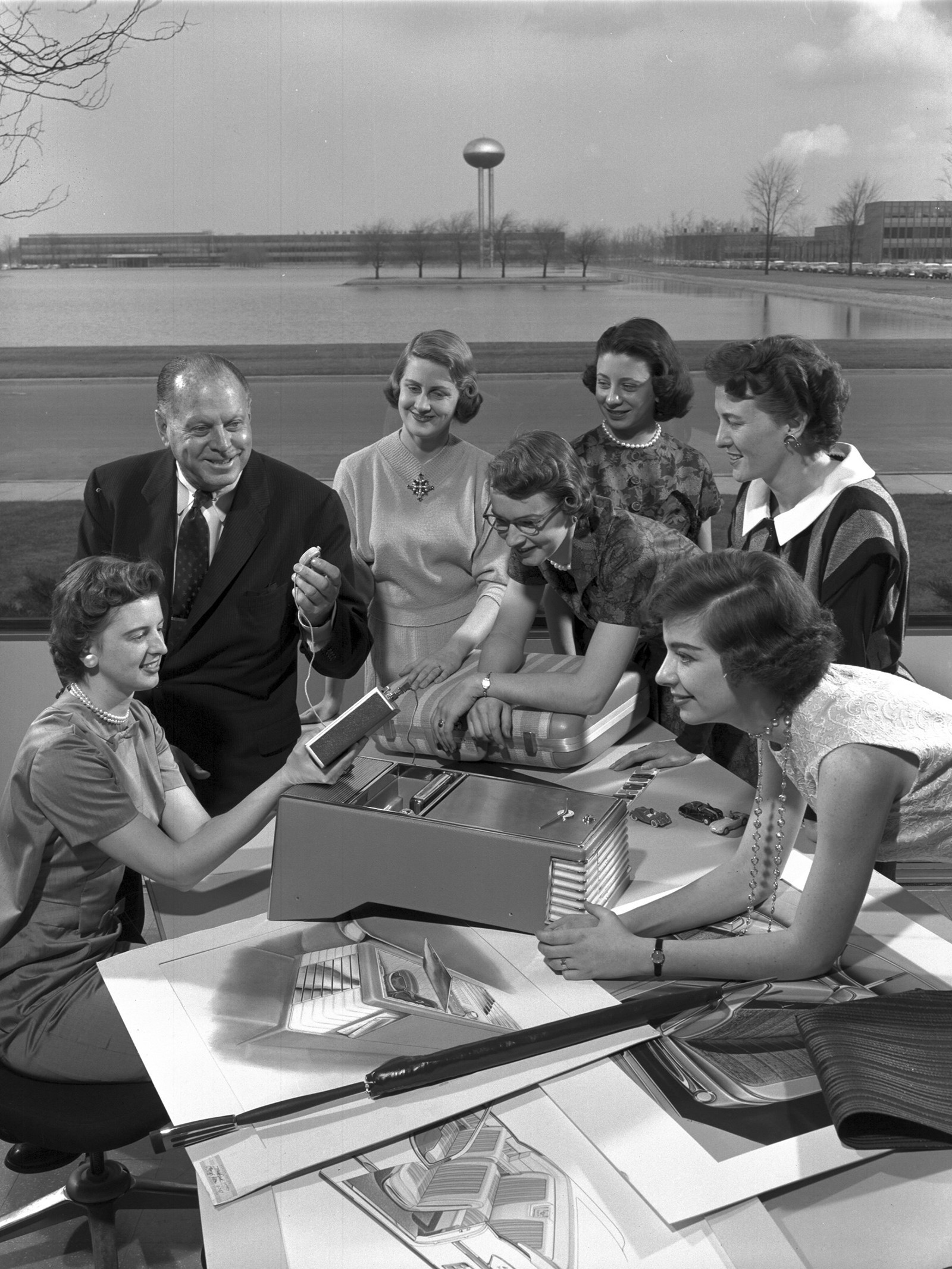
In 2019, the future of the car is in peril: as Nathan Heller posed in a New Yorker article this summer, maybe the automotive era has been a grave, albeit century-defining, mistake. More than a provocation, he outlines how “the road has emerged as the setting for our most violent illustrations of systemic racism, combustion engines have helped create a climate crisis, and the quest for oil has led our soldiers into war”. The V&A’s exhibition doesn’t ignore this: dedicating a section of the show to the future, it boldly asks whether we will continue to need cars at all. In a way, the current identity crisis of the car could be a way to hit refresh on a new century in more ways than one: whatever the future car will look, sound, act and feel like in years to come – or whether it will even exist – car makers will also inevitably have to leave behind the outdated assumptions and associated sexism that came with its initial, petrol-running iteration.
Strangely enough, though the feminine association with car interiors was a huge restriction for the Damsels, the inside – not the outside – of our future cars are actually at the forefront of contemporary design-thinking. Some three-quarters of a century after the Damsels entered General Motors, there’s a palpable resurgence in the importance of interiors to car design, especially when it comes to the driverless cars of the future. After all, if we won’t actually be driving the cars, what could we be doing in there instead? It’s a question writer Johanna Agerman Ross asks in her essay in the Cars: Accelerating the Modern World catalogue, who points out that if the future lies in automated cars designed for shared use – like driverless taxi services – the potential for the interior design of cars is limitless. Hopefully the functions that arise might be somewhat more useful than the “face-powder compact, lipstick case, cigarette case, comb, cigarette lighter and change purse” that came with the Dodge La Femme, a 1955 car designed for women, by men. By 1956, it had of course flopped – though I’d be lying if I said I’d say no to some of those in the occasional late-night Uber Lux home.
Cars: Accelerating the Modern World is at the V&A from November 23, 2019.




